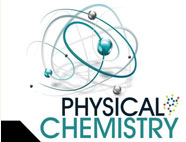


 علم الكيمياء
علم الكيمياء 
 الكيمياء التحليلية
الكيمياء التحليلية 
 الكيمياء الحياتية
الكيمياء الحياتية 
 الكيمياء العضوية
الكيمياء العضوية 
 الكيمياء الفيزيائية
الكيمياء الفيزيائية
 الكيمياء اللاعضوية
الكيمياء اللاعضوية 
 مواضيع اخرى في الكيمياء
مواضيع اخرى في الكيمياء
 الكيمياء الصناعية
الكيمياء الصناعية |
Read More
Date: 27-11-2019
Date: 23-10-2020
Date: 28-10-2020
|
Hydrogen halides such as H-Br and H-Cl are suitable electrophiles for a simple addition to an alkene. Since the halogen is much more electronegative than the hydrogen, the H-X bond is quite polarized, with the H carrying a partial positive charge (δ+) and serving as the electrophilic atom. In this example, HCl adds to but-1-ene to form racemic 2-chlorobutane:

The mechanism begins with an electrophilic addition elementary step, where the alkene forms a new sigma bond to the electrophilic H, and breaks the H-Cl bond displacing Cl-. The second elementary step is a coordination step, where the chloride ion attacks the carbocation to form a second sigma bond. Note that overall we have lost one pi bond, but gained a sigma bond. Notice that Markovnikov’s Rule is followed here, since the secondary carbocation formed is more stable than the alternative, which would have been primary.




|
|
|
|
التوتر والسرطان.. علماء يحذرون من "صلة خطيرة"
|
|
|
|
|
|
|
مرآة السيارة: مدى دقة عكسها للصورة الصحيحة
|
|
|
|
|
|
|
نحو شراكة وطنية متكاملة.. الأمين العام للعتبة الحسينية يبحث مع وكيل وزارة الخارجية آفاق التعاون المؤسسي
|
|
|